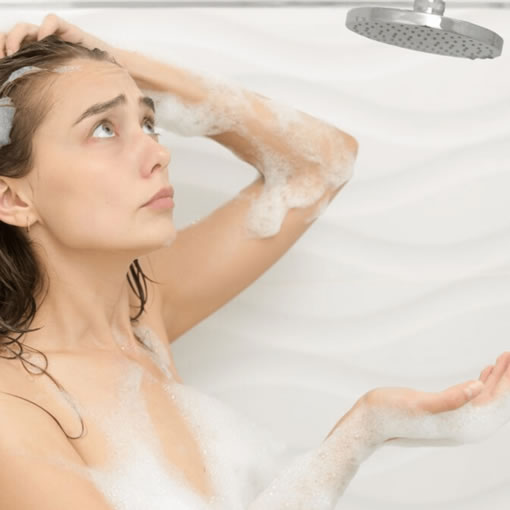This is one of our most frequently asked questions from our Members, as well as calls for well service repairs routinely. We have learned from experience that there are several causes of low water pressure, involving the mechanical, electrical and natural systems in the construction of the well. It can also be the result of the internal plumbing systems, apart from the well system. Let’s start with the easiest solutions first.
Light duty “fixes” (You may want to try these yourself)
Check faucet aerators -Wells can produce and transport high levels of sediment and other microscopic particulates, which if suddenly increasing, can clog the aerators frequently found on most faucet outlets. If you are experiencing low pressure, the first thing to check is the aerators, and a simple rinsing may fix the problem.
At WelGard®, we had one member who called “out of water”, but realized after a series of triage questions, that the well had suddenly produced high levels of iron, which stopped up all of the faucets. The situation was resolved instantly.
By pass water treatment equipment – the majority of well owners have installed water treatment equipment to trap sediment naturally occurring in the well, neutralize acidic water, soften the water for aesthetic purposes, or even remove harmful chemicals such as Nitrates, Arsenic, Radon and Magnesium, amongst other chemicals. And they should be installed with bypass valves that allow the water to go around the water treatment equipment in case of a malfunction of this equipment. Step 1 – most systems have a sediment filter, which may require flushing, service or replacement periodically, which can be completed by the homeowner. Step 2 – once the sediment filter has been assessed, test your water pressure without the water treatment equipment by using the bypass mode. If the water pressure improves, your water treatment equipment is the cause and keep your system in bypass mode. Then, call your water treatment professional; they can make adjustments with most equipment to improve the inhouse water pressure while still accomplishing your water treatment goals.
We (WelGard®) frequently receive calls which can be resolved with the “bypass” solution, or by flushing out the sediment filter with a forceful hose. Well systems generate a changing quality and composition of water, which is imperceptible until the treatment and filtration systems begin to clog. Again, these can be resolved on the spot.
Medium Duty “fixes” (Let’s call a professional/$$)
Pressure Tank/Pressure Switch – these components work together to manage the water supply and its related pressure. The size and condition of the tank is critical to providing good levels of pressure. For example, a small tank cannot sustain eh pressure for a 5,000 square foot house as well as a larger tank can. An older, end-of-life Pressure Tank cannot sustain the pressure levels that it could when it was brand new, since the internal workings of all tanks include a rubberized bladder, which weakens over time, from ongoing expansion and contraction (like a balloon inflated/deflated multiple times).
The pressure tank also likely has a range of 2 or 3 pressure settings which can be selected at installation, and to which the manufacturer builds each tank. These adjustments can usually made at the pressure switch. If the pressure switch malfunctions, it can skew/reduce the settings, disabling the pump from supplying the water needed at higher pressures.
While it may be the easiest professional fix, adjusting/replacing the pressure switch is the least expensive solution aside from the Do-It-Yourself fixes noted above. So the primary hassle is locating, evaluating and scheduling an appointment for the repair visit (unless you have WelGard® Protection). And event hen, you don’t know the good news until it has been properly and honestly diagnosed. We have had as many situations where the Pressure tank is the culprit, and the requires replacement of this major well system component. This is included in the WelGard® Protection Plan and results in ZERO cost to our Members.
Heavy Duty “fixes” (call a professional/$$$$)
Well Pump – the well pump itself can be the culprit causing low water pressure, and may be diagnosed as unable to produce sufficient amounts of water at advanced age and towards the end of its life. Pump diagnoses impacting the water pressure could be either that the motor is failing, which would be detected by high level of amperage (units of electrical resistance). This is clear indication that the pump motor is struggling to simply rotate. Pump failures could also be that after years of use, and depending on the water element/qualities, the impellers are worn or bent, making the pump incapable of propelling as much water as it once did. Both of these conditions should result in the replacement of the pump to ensure an adequate capacity of water flowing to the tank and house.
At WelGard® we are fond of our Members who proclaim “We replaced our well pump several years ago….”. Because that is routinely followed up with “…and we’ll never do that again.” This evaluation is complex and usually involves removing eh pump from the well for evaluation (after the amperage testing is completed). Visual inspection is frequently the only means by which the tests of the impellers can be completed, and you should certainly have a competent and honest professional do this work. For WelGard® Members, this work is “on us”.
Piping – the well system includes lots of piping (rigid and flexible) both below grade and laterally between the well itself and the house, which can be up to hundreds of feet. These pipes fail over time through friction with subterranean materials/rocks, etc., and constant jerking/torquing when the pump turns on. If the pipe cracks or joints weaken, it unseals the system making water flow more difficult throughout the system. As a result, the system should be pressure tested to ensure if this is the cause, before unearthing hundreds of feet of pipe for replacement.
While less frequently, this is an area easier for a qualified professional to diagnose, but difficult to repair, depending on the amount/length of piping involved. Engage a professional or always be ready with WelGard® Protection.
Heavy Duty “fixes”/Disasters (you need a professional $$$$++)
Well Failure – this is a lower likelihood reason for the problem, but real nonetheless. The fact is that a low yield well can suddenly and unexpectedly can reduce your water pressure, especially after the reserves are exhausted, during periods of “peak Usage”. This requires one of 3+1 solutions, assuming connecting to municipal water supplies is not an option. (1) Deepen you existing well, allowing the opportunity to locate additional aquifers and water sources, and also increase your water reserves in the well; (2) Hydrofrac the well, which with high pressure water injection, attempts to clear out and create new fractures. The original fractures/aquifers can get clogged and close over time; (3) Drill a new well hoping to find a more productive and plentiful source of water fractures. The +1 noted is for Alluvial/Sand wells, which due to their construction and need for screening, require rehabilitation and rescreening of he well, because the micron filtering screen gets clogged over time. Rehabilitation is likely required every 8-12 years.
WelGard® Products protect against well failure and the need for rehabilitation. We have utilized all 4 methods of water respiration because anything that fails to produce an adequate supply of water is repaired or replaced by our competent, reliable and hones professionals.
Don’t let low water pressure get you down. There is always a solution to your concerns, and we can be your “friend in the business”, so that you’re not alone.

